Krishnan, Murugappan (2024) Enhancing Customer Churn Prediction in Telecom Using Federated Learning. Masters thesis, Dublin, National College of Ireland.
Preview |
PDF (Master of Science)
Download (938kB) | Preview |
Preview |
PDF (Configuration Manual)
Download (1MB) | Preview |
Abstract
Customer Churn is one of the major problems within the field of telecommunications. It directly affecting profits and the strategy undertaken for user retention. Most of the conventional techniques for predicting customer churn require sharing private information about customers. This introduces a significant risk of data leakage and violation of regulations. The study proposes an alternative approach to better predict churning with data privacy based on Federated Learning. In other words, FL lets you directly train machine learning models on source data in different places, one would keep a regional customer database up to date with sensitive customer data, since only model parameters would change and not the raw data itself. The study tells about how to use a Simple NN in a Federated Learning setup, with datasets spread out over three geographical nodes that focus on different types if customers in Mumbai, Ohio, and Ireland. It has batch normalisation for stability and ReLU activation for non-linearity, making it best for predicting churn in a binary way. The FedAvg algorithm will be used to combine the local model changes into a single global model over and over again during the training process. Key performance measures, like F1-score, accuracy, precision, and recall, are used to show how well the model works and how close it is to being perfect.
My findings show that the suggested framework is strong and improves the accuracy of churn prediction by a large amount, with an F1-score of 83.45 and an accuracy of 84.40 % is the highest among seven attempts. It shows that federated learning works for training high-performing models together across decentralised data while still protecting privacy. This study shows that FL can be used on a large scale and in real-life telecom settings. It also leads the way in customer data with privacy protection. For future work, the combination of automation with advanced methods of grouping is also in thought. This will make the model even better at what it does and make it more efficient.
| Item Type: | Thesis (Masters) |
|---|---|
| Supervisors: | Name Email Shahid, Abdul UNSPECIFIED |
| Subjects: | Q Science > QA Mathematics > Electronic computers. Computer science T Technology > T Technology (General) > Information Technology > Electronic computers. Computer science H Social Sciences > HF Commerce > Marketing > Consumer Behaviour Q Science > Q Science (General) > Self-organizing systems. Conscious automata > Machine learning H Social Sciences > HD Industries. Land use. Labor > Specific Industries > Telecommunications Industry |
| Divisions: | School of Computing > Master of Science in Artificial Intelligence |
| Depositing User: | Ciara O'Brien |
| Date Deposited: | 20 Jun 2025 08:33 |
| Last Modified: | 20 Jun 2025 08:33 |
| URI: | https://norma.ncirl.ie/id/eprint/7953 |
Actions (login required)
 |
View Item |

 Tools
Tools Tools
Tools